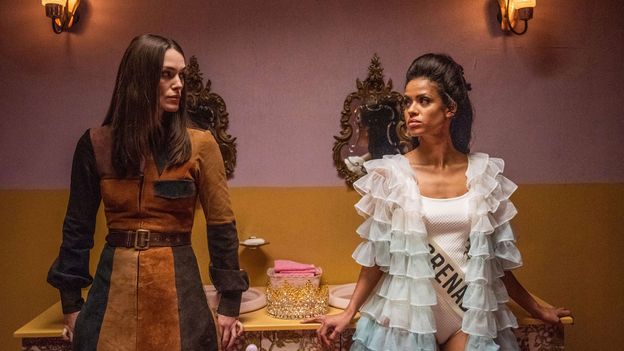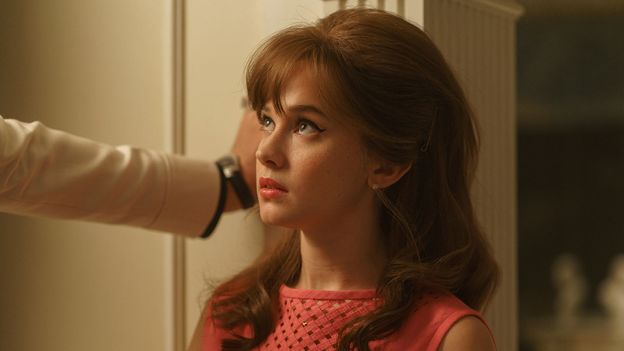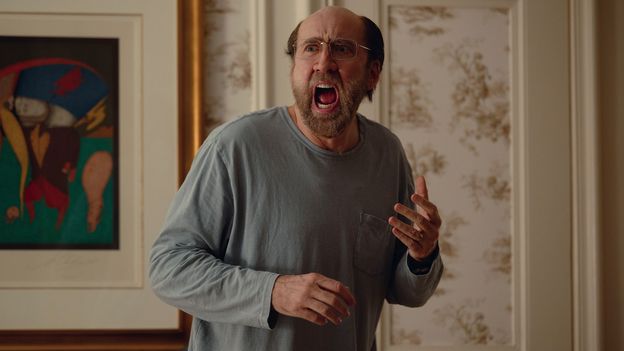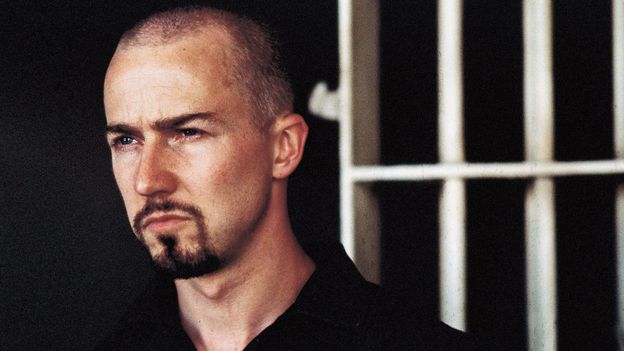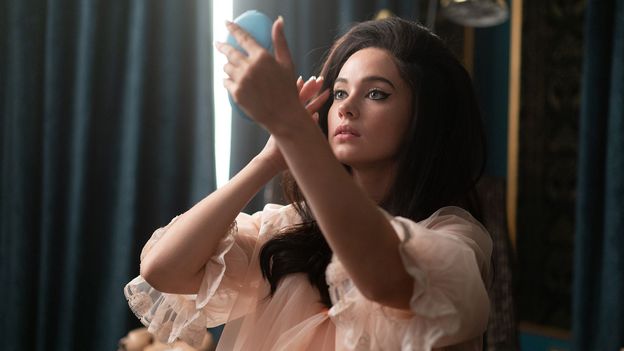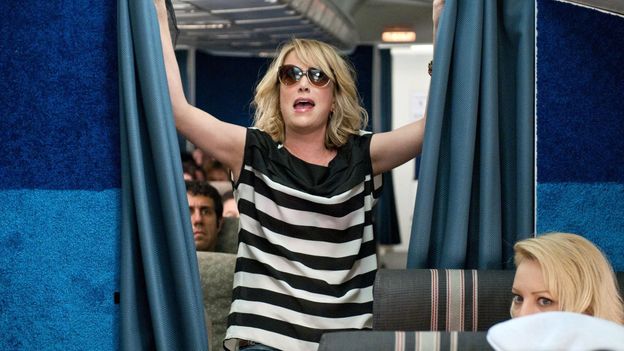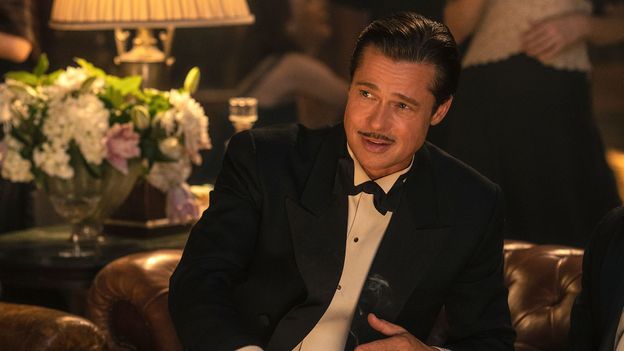It’s a knotty question explored, to varying degrees, in the numerous films about pageants and their contestants that have been made, stretching back to the early days of cinema history.
Women as window dressing
Certainly, the very early movies about pageants hardly showed them in a good light. One of the first films on the subject, Frank Tuttle’s 1926 silent picture The American Venus, saw Miss America herself, Fay Lanphier, land the titular role. The film, one of the first to use Technicolor, follows a PR man hoping to promote a cosmetic business by getting the owner’s daughter to win a beauty pageant. The now-lost movie proved popular and remained in theatres for two years. Clips online reveal some of the title cards used, which detail the body measurements of the Venus de Milo, the ancient Greek statue long considered to be the ideal of womanhood, and offer such quotes as, “an eye feast of beautiful women and luxurious settings” and “a galaxy of gorgeous girls”. According to critics at the time, the movie objectified the female body as much as pageants do.
“Women’s legs, backs, sides and abdomens as low as below the navel, are shown aplenty,” wrote one perturbed critic in the trade journal Harrison’s Report. “Many of the tinted scenes of the fashion revue were very daring in their exposure of the Atlantic City bathing girls,” commented another in the Washington Herald. “One scene especially drew forth gasps from the audience; whether from shock or admiration, we cannot say.”
The American Venus was evidently a movie of its time, in which female characters served as window dressing to the machinations of male characters, as was the case with most other pageant-centred movies in subsequent decades. Don Maguire’s 1957 comedy Hear Me Good is about a conman trying to rig the Miss World Wide Beauty contest by having his girlfriend enter. A few years later, in 1964, came the release of The Beauty Jungle, a Pygmalion-esque story about a journalist who persuades a typist to become a professional pageant competitor. Val Guest’s British comedy was meant to be a satirical exposé of the corrupt pageant industry but the film itself perpetuated a negative view of women by having Janette Scott’s lead trying to sleep her way to victory and showing the other female contestants in bitter conflict, calling each other names like “you bandy-legged cow”.
Satire has often been the lens through which the beauty pageant has been presented. 1975’s Smile, directed by Michael Ritchie and written by Jerry Belson, was praised upon its release with critics like Roger Ebert saying it “does a good job of working over the hypocrisy and sexism of a typical beauty pageant”. However, Christina Newland, film journalist and editor of upcoming book She Found It At The Movies: women writers on sex, desire and cinema, argues that the film is, “totally coloured by a disdain toward women”.
“Ritchie uses [the film] to diagnose a deeper illness in American society of that time,” Newland adds, “but he is also a man, and he kind of links that social illness to womanhood, or to the feminine. That’s a real issue.”
A more respectful view
The 1999 dark comedy Drop Dead Gorgeous, taking its cues from Christopher Guest’s mockumentaries, also satirises the pageant industry but importantly both gives respect to its lead beauty queen character, and acknowledges one of the key reasons why a woman may want to compete in such a seemingly antiquated competition: to escape. Kirsten Dunst’s Amber Atkins wants a better life and thinks winning the competition will provide opportunities to leave the trailer park she grew up in. The same goes for Holly Hunter’s Carnelle in 1989’s Miss Firecracker and Minnie Driver’s Mona in 2000’s Beautiful.

